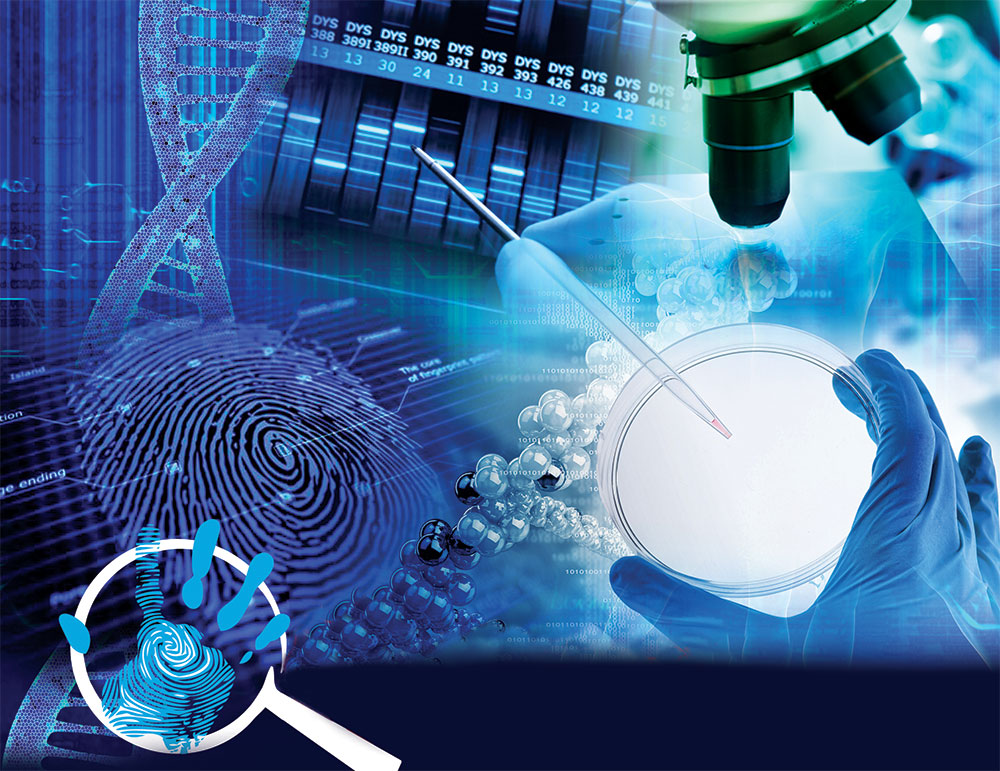INTRODUCTION TO FORENSIC SCIENCE
Forensic Science refers to the application of science to law. It is an amalgamation of different fields of science and provides a scientific aid in criminal investigation. It sees the scientific value of an evidence and thereby helping in administration of justice. The forensic scientists work in association with Police personnels and counsels.

Origin & Development of Forensic Science
The origin of the word ‘forensic’ comes from a Latin word ‘forensis’ meaning forum. There have been many brilliant contributors who actually developed the principles and techniques on which forensic science is based upon. The famous fictional character of ‘Sherlock Holmes’ created by Sir Arthur Conan Doyle applied many crime detection methods for investigative purposes back then. Bertillon, Mathiew Orfila, Sir Calvin Goddard, Francis Galton, Albert S. Osborn worked in the direction of development of Forensic Science. Edmond Locard for the first time gave the idea of mutual exchange which lead to the development of principle of forensic science, which is ‘principle of exchange’ and it says- “two surfaces coming in contact with each other leads to cross transfer of materials”. All of the work done by these personalities laid down the principles and techniques which help in criminal investigation.
Branches of Forensic Science
Forensic Science is multidisciplinary in its approach covering many other areas. These different areas or branches include Forensic biology, forensic chemistry, forensic entomology, forensic physics, forensic ballistics, forensic document examination, forensic psychology, forensic botany, forensic odontology, forensic anthropology etc. These different branches arise from the basic sciences and their principles and techniques are useful in forensics.
Forensic Biology– it includes the detection and examination of biological fluids like blood, semen, saliva.
Forensic Chemistry– it undertakes the examination of chemical and controlled substances including alcohol.
Forensic Entomology-this branch is focused on studying the lifecycle of insects infesting the dead body to estimate time since death.
Forensic Physics– it involves the study of glass particles, paint chips, fibers, cement, footprints, tyre marks, tool marks and restoration of erased marks.
Forensic Ballistics– this division involves the identification and comparison of firearms including fired cartridges, ammunition and bullets recovered from the crime scene.
Forensic Documents– this branch conducts the examination of questioned documents like handwriting examination, signature identification and counterfeit currency.
Forensic Psychology– uses the principles of psychology to study the criminal behavior and thereby helps in criminal profiling.
Forensic Botany– it studies the botanical evidences like pollen, wood, flowers.
Forensic Odontology– this branch examines the dental evidences recovered from the crime scene particularly bite marks so that individualization can be done.
Forensic Anthropology– this division examines the skeletal remains found from the crime scene to identify individuals.
Other than these abovementioned branches or divisions many other branches of forensic science are there which are being used for the investigative purposes.
Conclusion
The Forensic laboratories aim to provide the forensic services needed to investigate any crime. Every forensic laboratory has a staff of well qualified experts or scientists who thoroughly compare and examine various evidences recovered from a crime scene. The examination of forensic evidences help in establishing a link between crime scene, culprit and victim. The scientists working in FSLs performs the duties ethically. In Today’s challenging world where crime is growing everyday we need to have efficient forensic services & latest techniques to recognize the potential of an evidence so that an innocent can be exonerated and a culprit be punished forensic science makes this process feasible.


Very apt overview of Forensic Science and a good read.
Thanks for sharing 🙂